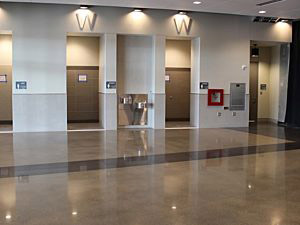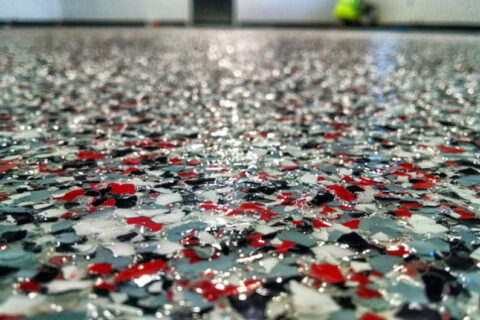Sealing Cracks in Concrete at a Food Processing Plant in Burlington, WI
One of the tasks we often have to do for our industrial and commercial customers is filled cracks in concrete floors. It’s important that these cracks be filled in any facility (for employee safety and just general appearances), but doubly so in food processing facilities, which absolutely need to keep out bacteria.
Recently, a food processing facility in Burlington, Wisconsin, brought us in to fix up their floor. It had become quite cracked over the years, and a cove where the wall meets the floor had really deteriorated. So over Labor Day weekend, we sent in a team to tackle the floors.
The first task was to open up cracks with grinders. After cleaning out the cracks, we inserted two-part compound polyurea into the cracks to provide a tight seal for maintenance crews needing to wash walls, floors, and food processing equipment. This work really must be done well in the food processing plants, because if it’s not the water from cleaning routines can settle into the cracks or coves, creating an environment that quickly becomes bacteria’s best friend. It also helps keep out any bugs that might find their way into the facility. After the polyurea solidified, we used scrapers to remove excess compounds.
After finishing the cracks, we moved on to the coves. To remove the caulk we used a combination of mechanical and manual scrapers. Once finished we applied new caulk to the coves. While the work fixing the cracks and deteriorated coves work certainly makes the facility look better, it’s really about ensuring food safety. This requires attention to detail, and experience with the right equipment and materials.
To learn more about sealing concrete cracks, check out our Joint and Crack Repair page.


